The West Highland White Terrier is a miniature “Scotsman” with snow-white fur, bred specifically for working with small games. In everyday life, he is bold, curious, and very playful.
The West Highland White Terrier is an incorrigible optimist, a perky fidget with beady eyes and a luxurious shaggy “fur coat” of snow-white color. By nature, contact, and energetic, this curious furry cannot imagine his life without adventures and small adventures, which he strives to embark on during every walk. At the same time, the West Highland White Terrier is not at all lazy and will be overjoyed if he is entrusted, for example, with housing security. Fortunately, representatives of this breed cope with the function of live “signaling” like no other.

The West Highland White Terrier is a rather ancient breed, so there is not as much reliable information about its origin and development as we would like. Few written sources from the Middle Ages claim that the ancestors of today’s West Highlands successfully hunted small animals as early as the 12th century. At the same time, modern researchers are sure: the true history of this species of terriers began at least several centuries earlier.
The homeland of the West Highland White Terriers in western Scotland with its rocky ridges and minimalistic mountain landscapes (West Highland from English – western highlands). It was here that small, but grasping stigmatics revealed their hunting potential, pulling otters out of stone crevices and digging badger holes. What’s interesting: at first, West Highland White Terriers had a wider palette of colors, ranging from fawn to brindle varieties. But individuals with white wool in those times immemorial were not quoted, as they were considered unnecessarily painful, so the owners tried to get rid of all white puppies in the litter.
The breed owes its present appearance to two eminent Scots who lived at the turn of the 19th-20th centuries – Colonel Edward Malcolm and the 8th Duke of Argyll, George Campbell. Both gentlemen approached the issue of animal breeding innovatively, starting to select and in every possible way to promote white-haired news. Well, since in those days the name of the West Highland White Terrier was not yet fixed for the breed, the colonel’s wards were christened Poltalloch Terriers (after the name of the estate in which they were bred), and the Duke of Argyll’s pets – Rosenette Terriers.
The first club of lovers of the West Highland White Terrier breed was opened in Scotland in 1904, and its founder was a descendant of the same George Campbell. Pretty soon, or more precisely, three years later, the first nursery, specializing in the cultivation of snow-white Vestikas, began its activity. However, it was possible to put an end to the formation of the unique exterior of the breed only in 1924, after breeders were officially forbidden to exhibit at dog shows, in whose pedigree other representatives of the terrier group were noted (Scottish Terrier, Cairn Terrier).
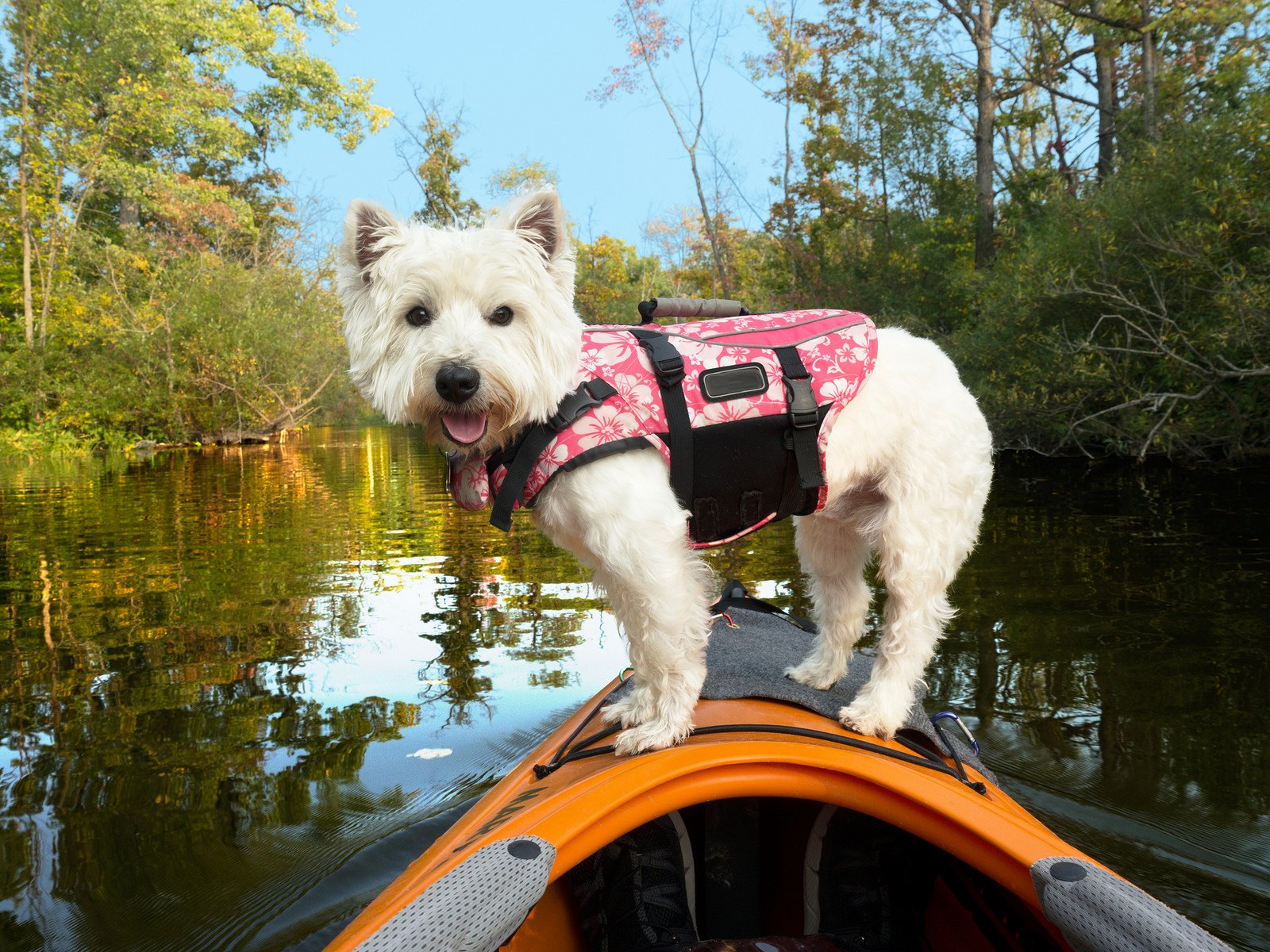
The West Highland White Terrier is a snow-white, compact shaggy with an inquisitive look, vaguely reminiscent of the Bichon Frize. Due to their cute appearance and more than modest dimensions (the height of an adult dog is up to 28 cm, weight is up to 10 kg), the West Highlands are quite suitable for the role of apartment residents. At the same time, they are not particularly fragile, like most representatives of decorative breeds, which means that the owner does not have to control every step and jump off the pet.
The skull of the West Highland White Terrier is wide, slightly convex, with a pronounced stop and prominent brow ridges.
Even though the West Highland White Terrier is an almost miniature dog, its jaws are powerful. As for the bite, it is of the representatives of this breed of full, scissor type.
The wide and deeply set eyes of the West Highland White Terrier are almond-shaped and have a dark iris. The dog’s gaze is intelligent, discerning.
The nose is large, black in color, which almost does not protrude beyond the muzzle.
The ears are small, the ears of the West Highland White Terrier are pointed, set not too wide, and carried straight. The outer side of the ear canal is covered with velvety fur that is never cut.
The neck of dogs is a moderately long and well-muscled neck, which gradually thickens towards the body.
The body of the representatives of this breed is compact, with a straight back, a strong lumbar region, and a wide croup.
The front legs of the West Highland White Terrier are short, well-muscled, and without curvature or eversion. In some cases, the paws of the animal may be slightly unfolded. Experts explain this feature by the fact that during the hunt, the ancestors of today’s dogs tore up the earth, throwing it to the sides, which provoked an easy marking of the limbs. The hind legs of the West Highlands are short but sinewy, with a fleshy and wide upper part. Dog’s feet are rounded, with plump pads and tightly knitted toes, while the front feet are noticeably larger than the hind feet.
The tail has a straight tail up to 15 cm long, which it carries almost vertically.
The coat of the West Highland White Terrier consists of a dense fur undercoat and a coarse topcoat, which can be up to 5 cm long.
The West Highland White Terrier belongs to those few breeds, modern representatives of which exist in a single color – white. An important point: the color of the coat is extremely unstable and very dependent on external factors, therefore, among animals, there are often individuals whose “fur coats” have a yellowish undertone.
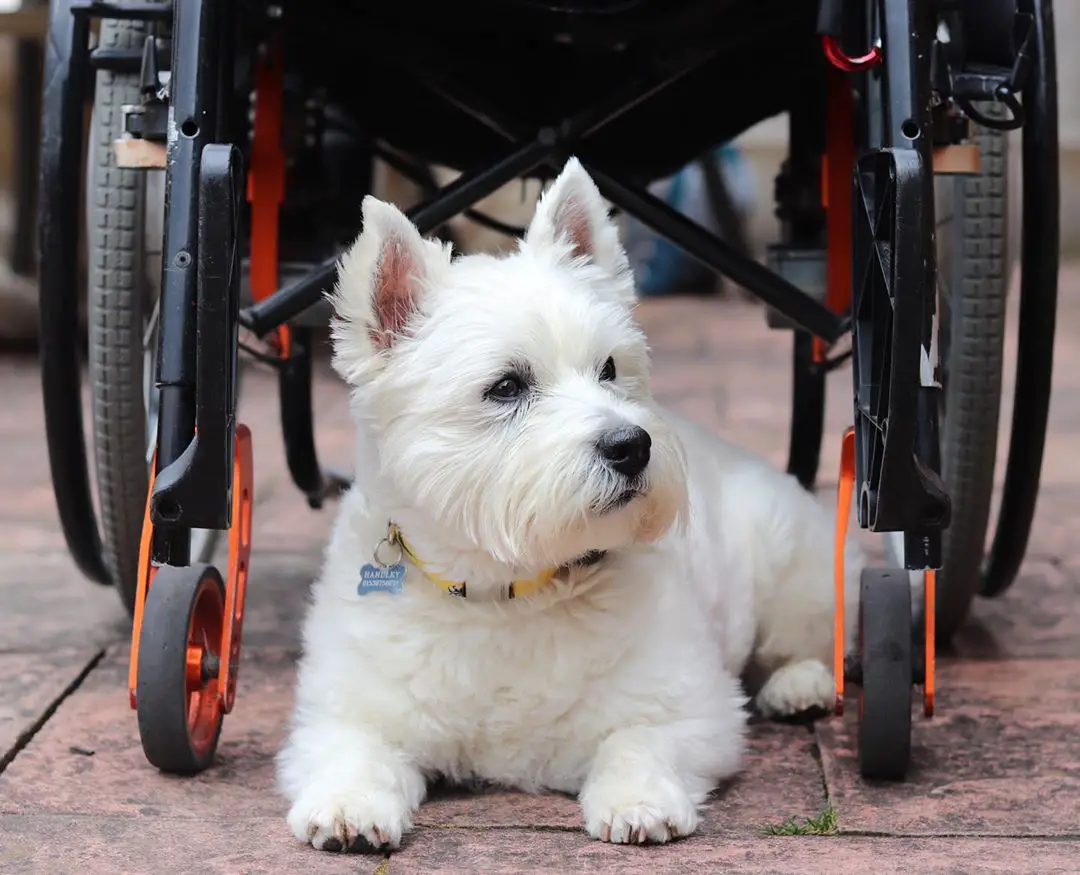
Any more or less noticeable deviations from the standard can affect the show evaluation of the show class West Highland White Terriers. These are usually wavy or curly hair, large ears, short or vice versa – an excessively long neck, atypical set of the limbs. A dog may not be allowed to participate in competitions, as a rule, for two reasons: for the manifestation of unreasonable aggression or cowardice, as well as for obvious defects in behavior and physical development.
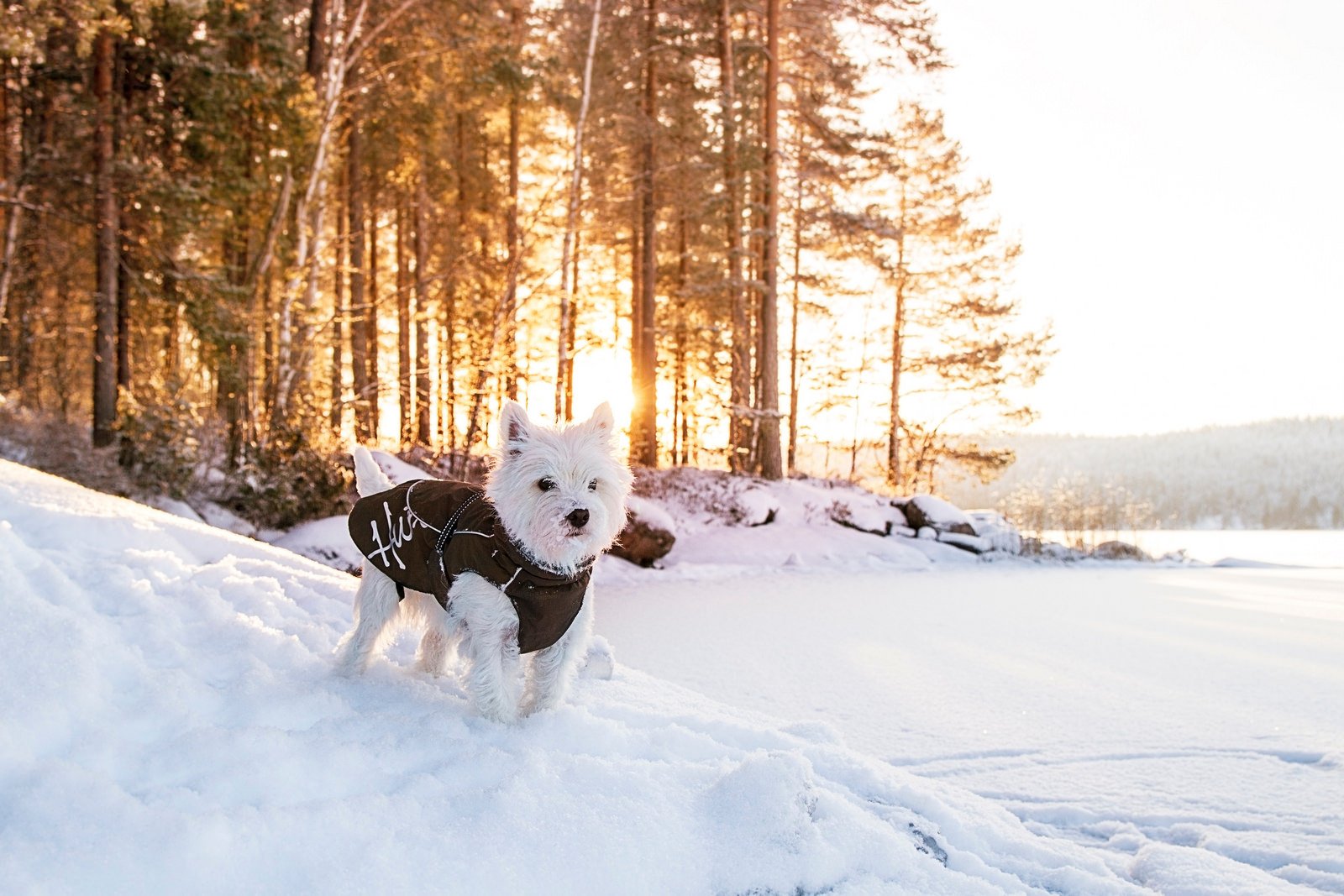
White and furry West Highland White Terriers just outside. Inside, these charming “Scots” are far from being as good as they seem at first glance, moreover, they are rather stubborn and do not really like to observe subordination. At the same time, against the background of their more aggressive and temperamental relatives in the terrier group, the West Highland White Terriers seem, if not quite quiet, then quite manageable pets. However, this is not an innate dignity, but rather the result of the work of pedigree specialists, who for a long time “extinguished” the hunting instincts of the breed and stimulated its companion qualities.
All West Highland White Terriers do not like to be ignored, and these snow-white babies do not cope well with loneliness. So before you introduce young news into your house, think about whether you are ready to sacrifice silence and your own peace for the sake of a four-legged hustler. West Highland White Terriers have a partnership with children: they enjoy playing together, while both parties involved in the process feel on an equal footing. It’s another matter if the dog has to deal with babies who, through their thoughtlessness, can annoy her with obsession or cause pain. In this case, the lead will definitely fight back (guess in what way).
It is easy for the West Highland White Terrier to delegate the duties of a watchman. Most of the representatives of this breed have a keen hearing and can warn the owner about the appearance of a stranger with a sonorous bark. At the same time, they do not feel much hostility towards strangers, which means they will not frighten your guests with sudden swoops and displeased grunts.
Despite all the efforts of the breeders, the specialists in burrow hunting in the West Highland White Terriers have not completely died, so from time to time, the dogs will be drawn to feats. In particular, on walks, Vestikas will selflessly dig trenches in search of an imaginary gopher, and when they see a garbage rat or some other small animal, they will immediately rush into battle. Treat this behavior of a pet with a slight irony: after all, every breed has its own harmless cockroaches.
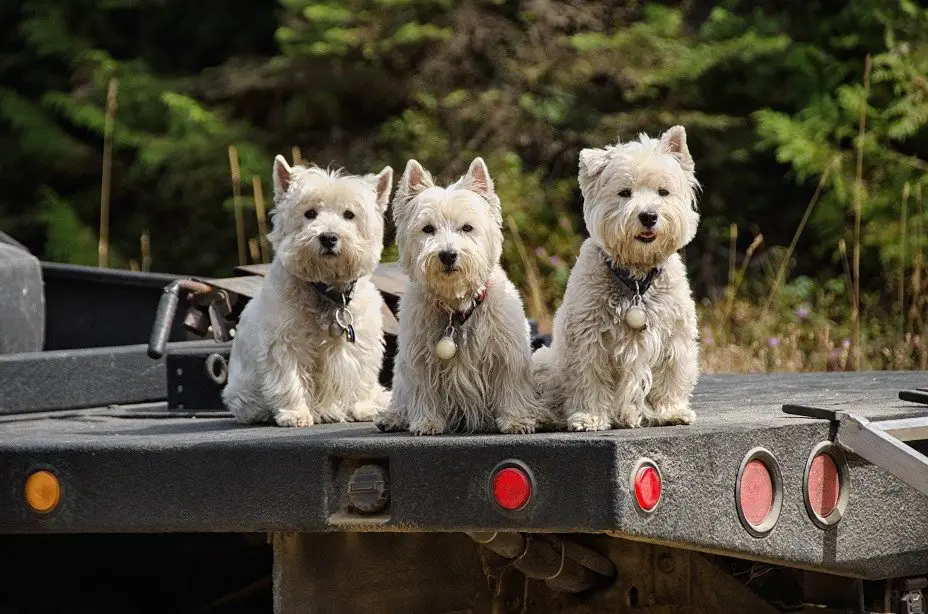
The West Highland White Terrier will never obey the commands of someone who does not respect and considers himself to be deliberately stupider, so the first thing to start training a dog with is to assert his own authority. In addition, the pet will have to be constantly stimulated, since this is not a breed that will work on sheer enthusiasm. If your ward has completed the command, appease him with a treat, and then give him a pause – West Highland White Terriers love to rage aimlessly and fool around as much as they like to hunt. By the way, about games: from the very first days, let your pet understand that it is strictly forbidden to practice hunting skills on the owner and the rest of the family. If the angry West Highland White Terrier is still trying to taste your hand or leg, gently turn his attention to the toy.
Important: while training and practicing commands, try to be alone with your pet. The presence of strangers only slows down the training process, since it is more difficult for a dog to concentrate if two people communicate with it at the same time.
You should train your West Highland White Terrier puppy to use the collar and leash before you go out for the first walk. To do this, buy a one and a half to two-meter strap and an unfastening collar with a lock, which will not need to be worn over the head, thereby frightening the animal. After the lead turns 10 months, you can train with him on the sites. Difficult and especially stubborn individuals should be enrolled in some dog club, where an individual training program will be selected for them, as well as their behavior will be corrected.
If you don’t want your living with your West Highland White Terrier to turn into a who-who-wins confrontation, pay special attention to teaching your pet basic behaviors. In particular, do not let the messenger lie on your bed, and do not let him look with hungry eyes at the family members gathered around the table. And there are no exceptions to the rules and indulgences: despite the external weakness and fragility, twisting from the owner of the rope from the West Highlands is simply virtuoso.
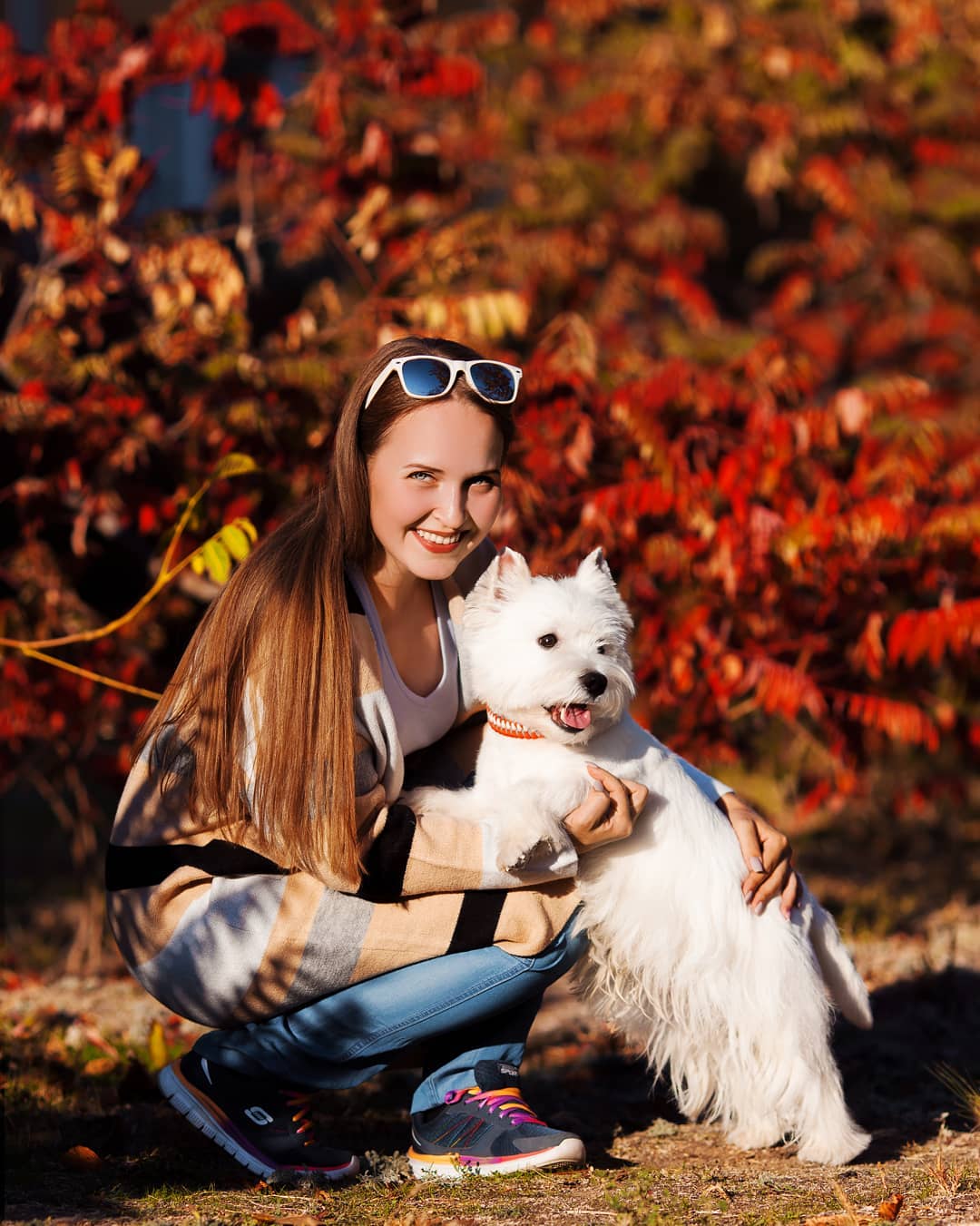
As noted earlier, it is not customary to go with today’s West Highland White Terriers on foxes and badgers. Moreover, at competitions and exhibitions, representatives of this breed have long been judged exclusively by external parameters and rarely by their working qualities. On the other hand, no one has the right to prohibit the owner of the West Highland White Terrier from walking with his ward on the animal either. So if you are eager to try your pet in business, sign up for any kennel club where there is a training hole, and practice your pupil’s hunting talents as much as you want. As practice shows, in their work, they are extremely reckless, but at the same time, they do not lose their minds. In addition, they very quickly learn the habits of a wild animal and can change tactics of behavior with lightning speed, if the situation requires it.
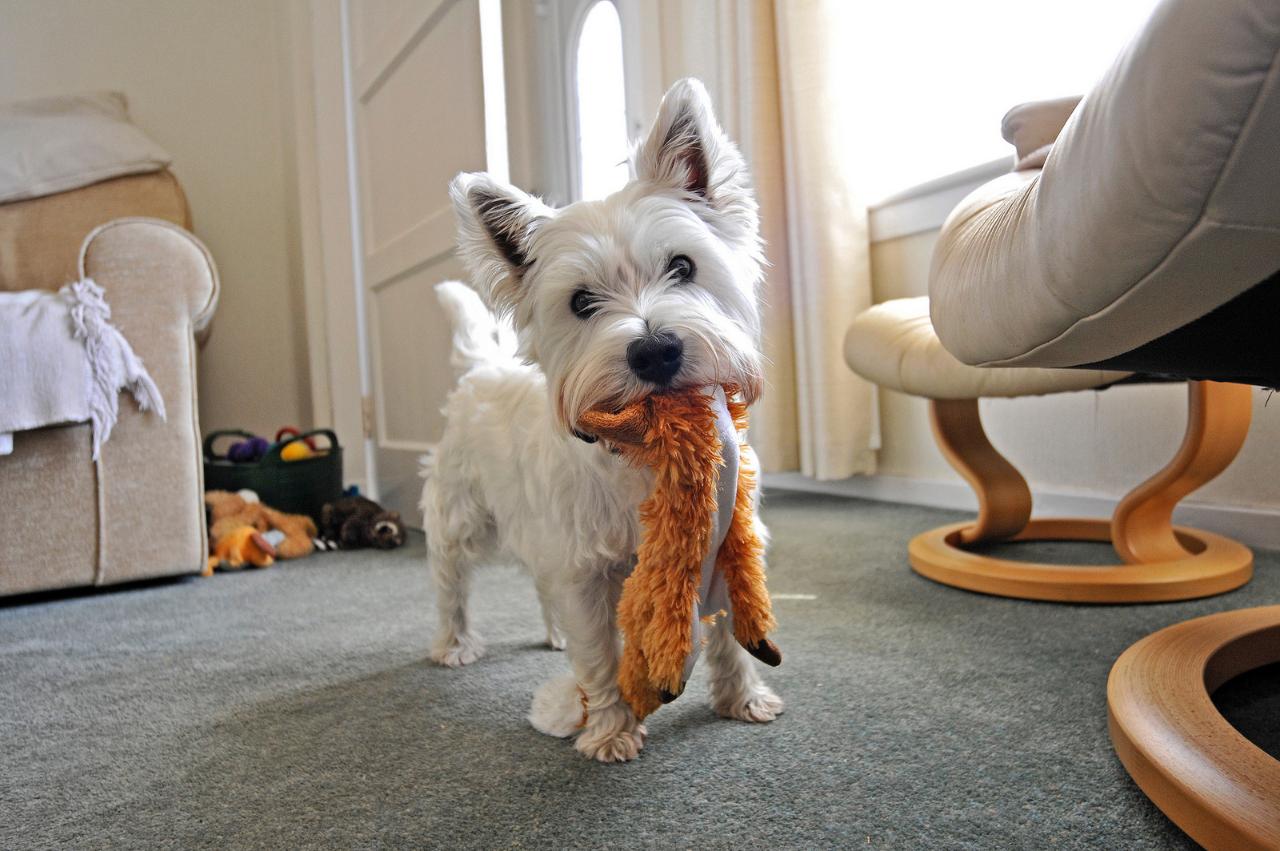
Every year West Highland White Terriers are increasingly turning into room-sofa pets, and the reason for this is the desire of the owners to keep the soiled “fur coats” of their wards in relative cleanliness. However, by nature, the lead is not so sissy and is quite capable of spending time outside, even if the weather leaves much to be desired. Bright, cute clothes and blankets, in which West Highland White Terriers are often dressed, are by no means a forced measure, but rather the owner’s desire to emphasize the uniqueness of his pet. In reality, West Highland White Terriers do not suffer much from the cold even during the winter months, provided that you do not keep the dog outside all day.
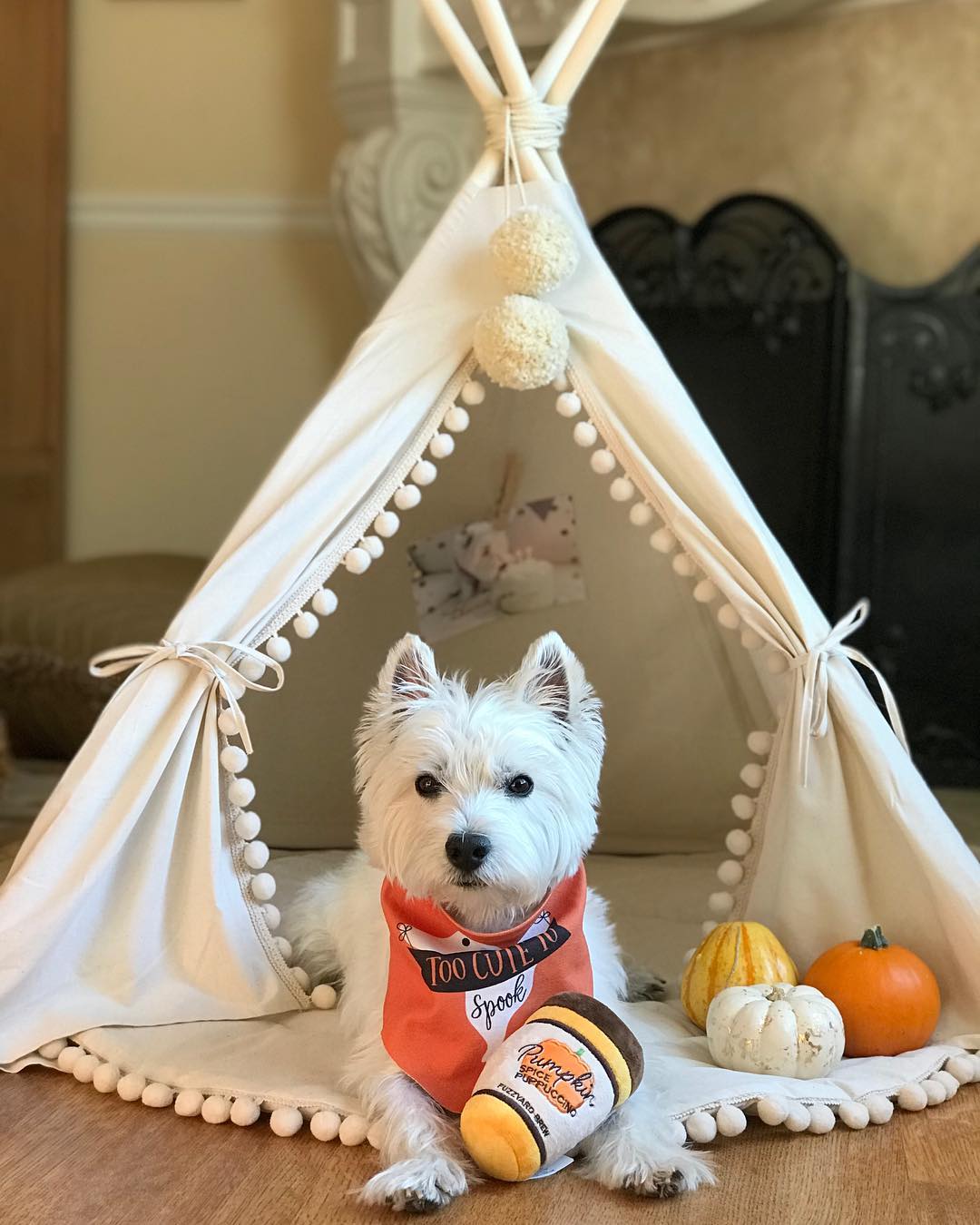
A nice bonus for fans of sterile cleanliness: West Highland White Terriers do not shed and practically do not smell. Of course, the fur of animals is regularly renewed, but the dead hairs from their “fur coats” do not fall out, but simply fall off. Accordingly, to preserve the image of the pet, it will have to be trimmed once every couple of months or, if it is a show dog, every 30 days. A haircut for these charming shaggy people is prohibited, as it changes the structure of the coat, softening it and provoking curling of the hair into a curl. As a result, the West Highland White Terrier loses its original appearance and becomes like a hybrid of a lapdog and a Bichon Frize. However, if you are not ambitious and do not plan to go to exhibitions, you can try to cut your ward’s hair. The dignity of the message will not be affected in the least.
Before trimming, the West Highland White Terrier is thoroughly combed, after which the throat area and the area at the elbows are treated with a stripping knife as short as possible. The line from the withers to the croup, as well as the crest of the neck, is also pinched with a knife, keeping the total length of the coat 4-5 cm and smoothing out the transitions. As an example: an exemplary West Highland White Terrier should have short hair on the sides and a so-called skirt – a fluffy, adorned coat on the sternum. The hair on the forehead, crown, and cheekbones is plucked by hand (plucking technique), giving the head the shape of a chrysanthemum. The hair on the legs is usually not shortened.
If you want to preserve the unique snow-white color of the West Highland White Terrier, get ready to devote an extra hour to an hour and a half to your pet’s coat. The fact is that the wool of representatives of this breed often turns yellow when dog saliva gets on it or from feed, therefore, to neutralize unwanted undertones, it is necessary to use a cleaning composition of crushed chalk and boric acid. The mixture is rubbed into the slightly moistened wool, after which its chalky particles are combed out with a regular hairbrush.
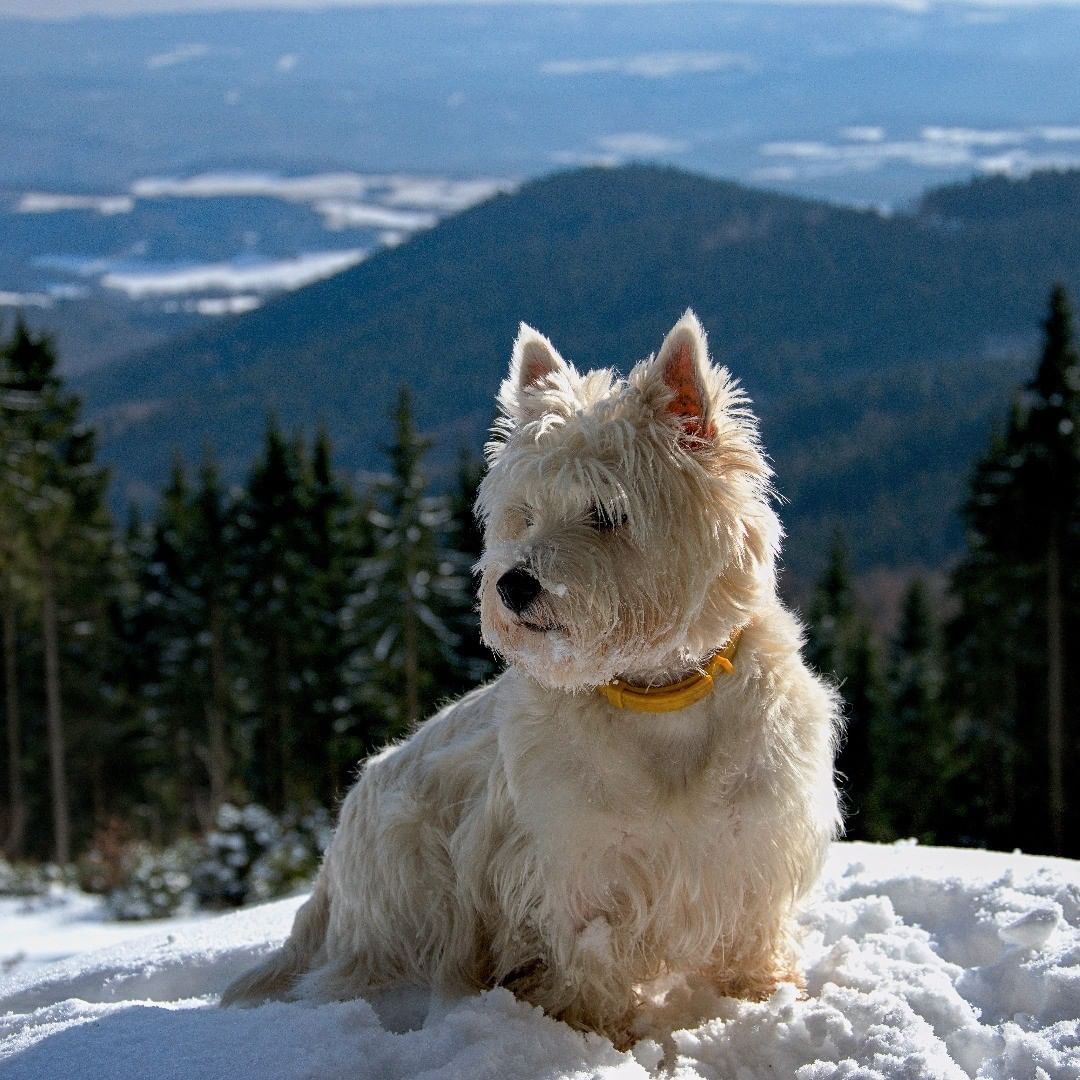
Once a month, West Highland White Terriers are bathed with diluted pet shampoo (conventional remedies will not work). Not the most useless purchase – a whitening shampoo that allows you to preserve the exquisite shade of the vest’s coat. Just do not test it on a puppy, otherwise, you run the risk of thoroughly spoiling the baby’s hair structure. Otherwise, any detergent formulation designed specifically for wire-haired dogs is suitable for the representatives of this breed.
Once every 5-6 days, the West Highland White Terrier should be combed with a rare comb with metal teeth, which will not tear the undercoat but only gently remove dead hair and debris. But this is if the pet’s fur coat is tough and healthy. Individuals with soft hair will have to be combed more often, otherwise, tangles are provided for you. In addition, do not forget to wipe the dog’s face with a napkin after eating so that food debris does not get stuck in the coat and does not provoke a change in its color.
Once a week, you need to pay attention to your ears: pluck out long hair that interferes with the free circulation of air inside the ear funnel, and remove the dirt accumulated in the sink. The eyes of the West Highland White Terrier are best examined every day. If brown streaks are found on the fur under the lower eyelids, the dog is most likely allergic, so grab your pet in an armful and run to the veterinarian for a consultation. The Vestikos’ teeth are brushed a couple of times a week. In addition, it is useful to introduce various solid foods into the dog’s diet, the particles of which act as abrasives and partially remove plaque. The paws of the West Highland White Terrier also need care, so after each walk, they should be thoroughly rinsed, and in winter, when the roads are sprinkled with reagents, they should also be lubricated with vegetable oil.
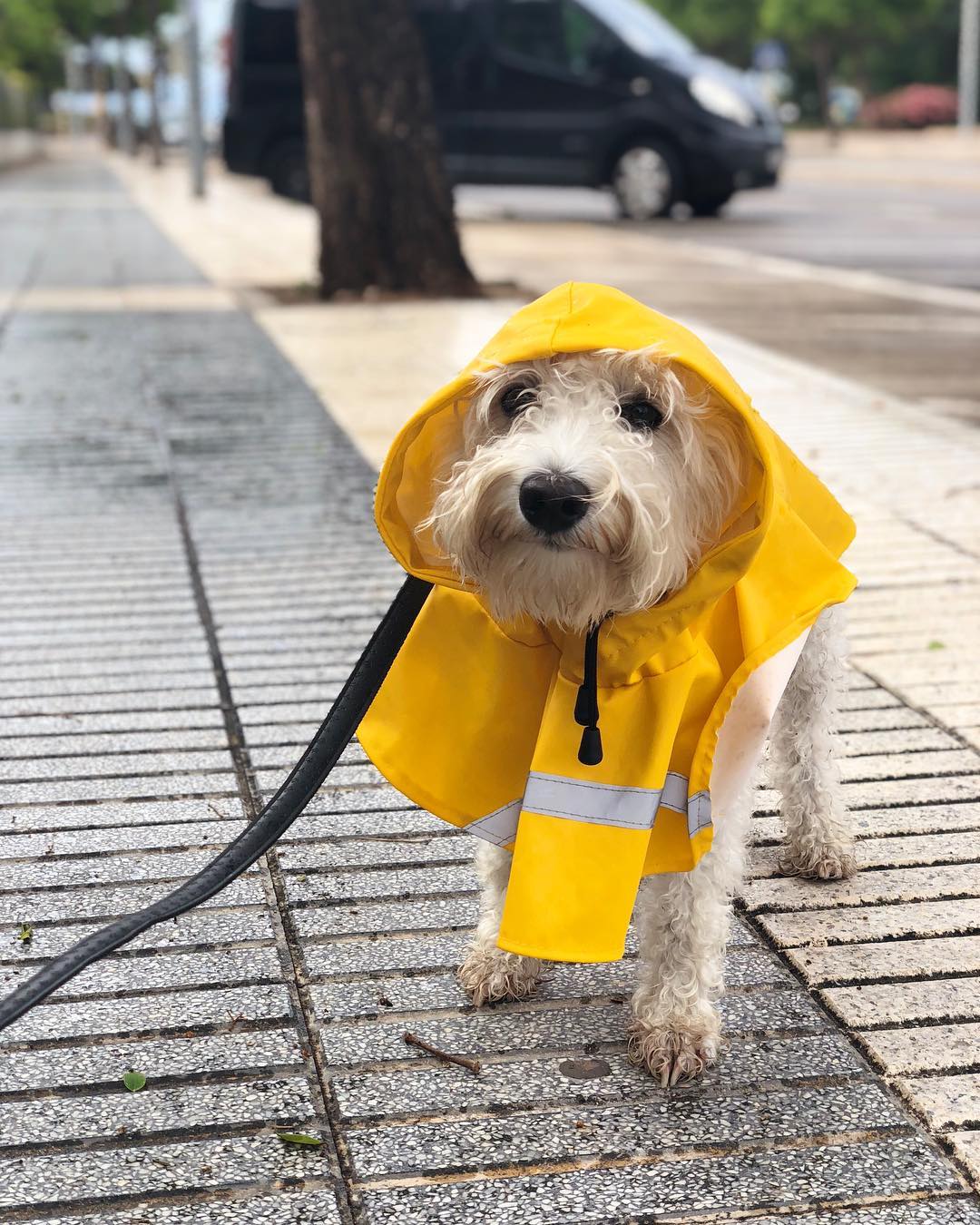
If your West Highland White Terrier doesn’t hunt (and he most likely doesn’t hurt), he will have to walk and exercise to compensate for his lack of adrenaline and positive emotions. It is necessary to take Vestikos out on the street at least twice, and preferably three times a day, and it should not be 15-minute jogging on the playground. The first walks begin at 3 months of age after the puppy has been routinely vaccinated and spent a week in quarantine. By the way, up to 6 months, babies are taken out into the street (it is taken out, not taken out) 5-6 times a day, which is due to the need to form their ability to relieve themselves outside the home.
The news loves to dig in the ground and can destroy a well-groomed flower bed or green lawn in a matter of minutes, so if you do not want to constantly argue with landscape designers and public utilities, it is better not to let your pet off the leash in the city. Walking with the West Highland White Terrier in nature, it is also better not to lose vigilance. Firstly, because dogs that are drugged with unfamiliar smells and sound instantly become difficult to control. And secondly, because the news is experiencing a real passion for the fall, in which they prefer to tumble well before reacting to the command of the owner.
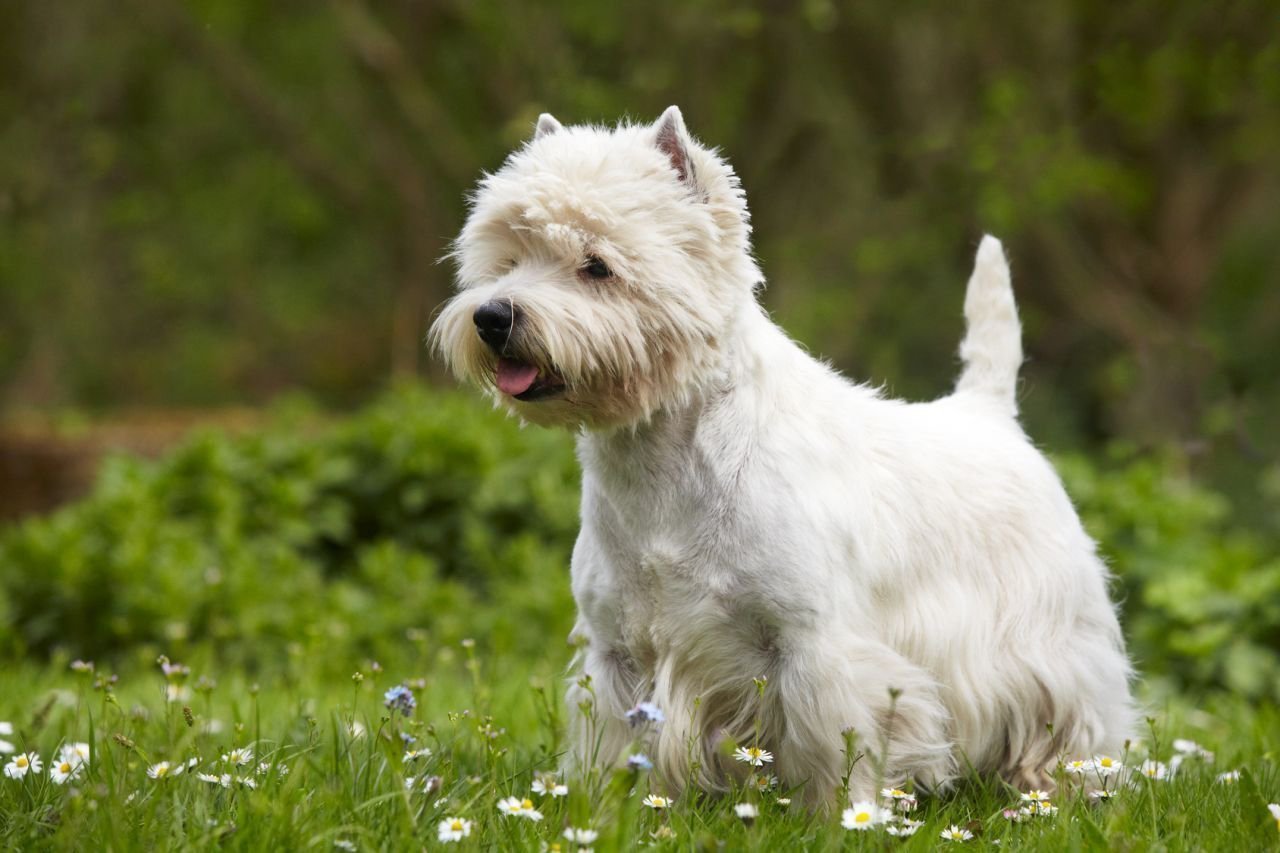
The diet of the West Highland is not much different from the menu of its other terrier brethren. In particular, half of the dog’s meal should be lean meat, which is supplemented with vegetables (broccoli, pumpkin, turnip), cereals (rice, buckwheat), dairy products, and fruits. However, since most of them are prone to food allergies, the approach to the preparation of the menu should be as careful as possible and preferably with the involvement of a veterinarian.
Eliminate chicken and wheat from the West Highland White Terrier’s diet once and for all. The same rule applies to industrial feed. If wheat flour and chickpea are found in the shop “drying”, return this product to the shelf and never look at it again. As for vitamin supplements, sometimes chopped greens (nettle, dandelion, parsley), brewer’s yeast, and salmon oil can be mixed into the food of West Highland White Terriers. Once a week, it will be useful to treat the fluffy with a quail egg, and in the season it can be pampered with half an apricot, a slice of pear, or a ripe plum. By the way, even though West Highland White Terrier sweets are strictly prohibited, dogs are just crazy about them. So when you are about to eat ice cream or candy, do not forget to hide well from the four-legged beggar.
For your information: the coat of the West Highland White Terrier can change its color and acquire a yellowish undertone if the dog’s diet includes foods containing artificial or natural dyes. For pets, this is not critical, but for show-class individuals, such changes can fundamentally spoil an exhibition career.
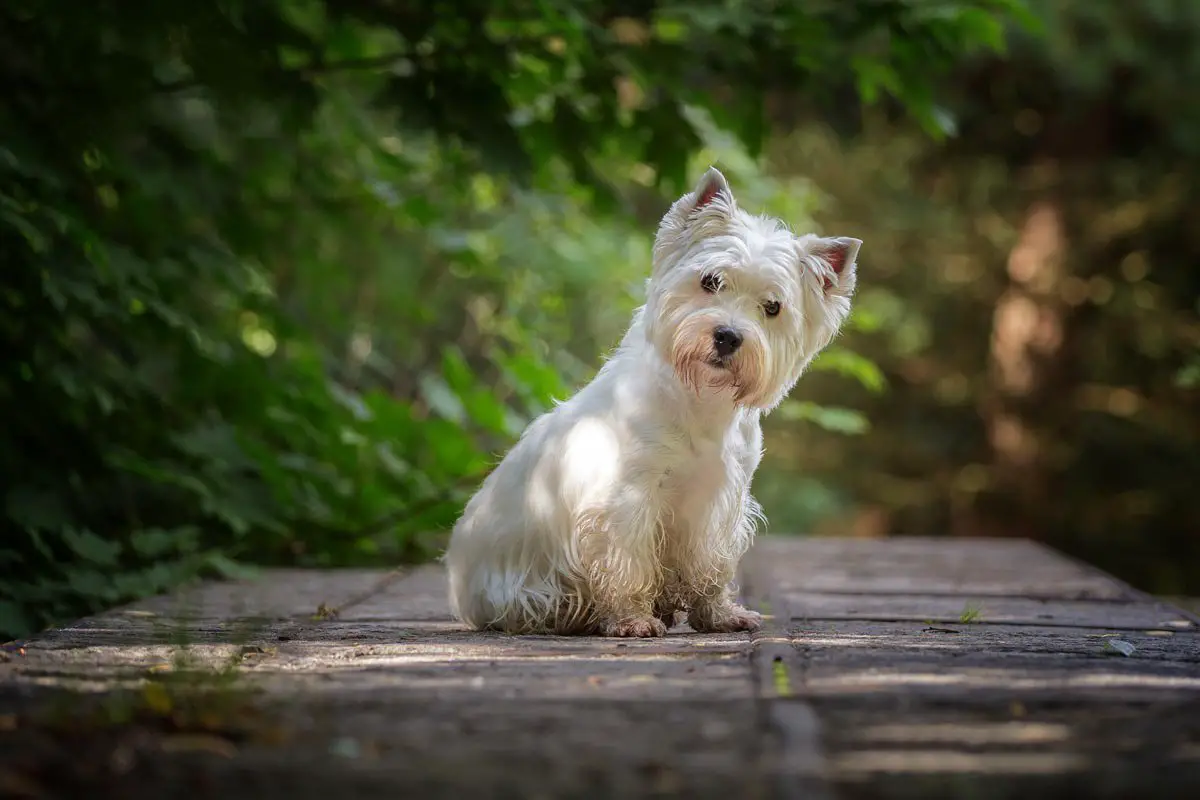
West Highland White Terriers live on average up to 13-15 years old and are less prone to hereditary ailments than their relatives in the terrier group.
Diseases that may occur in West Highland White Terriers:
- cranial osteopathy;
- atopic dermatitis;
- epidermal dysplasia;
- ichthyosis;
- congenital deafness;
- dysplasia of the hip joint;
- diabetes;
- von Willebrand disease;
- cardiovascular diseases;
- meningoencephalitis in white dogs;
- Perthes disease;
- Shaker’s syndrome;
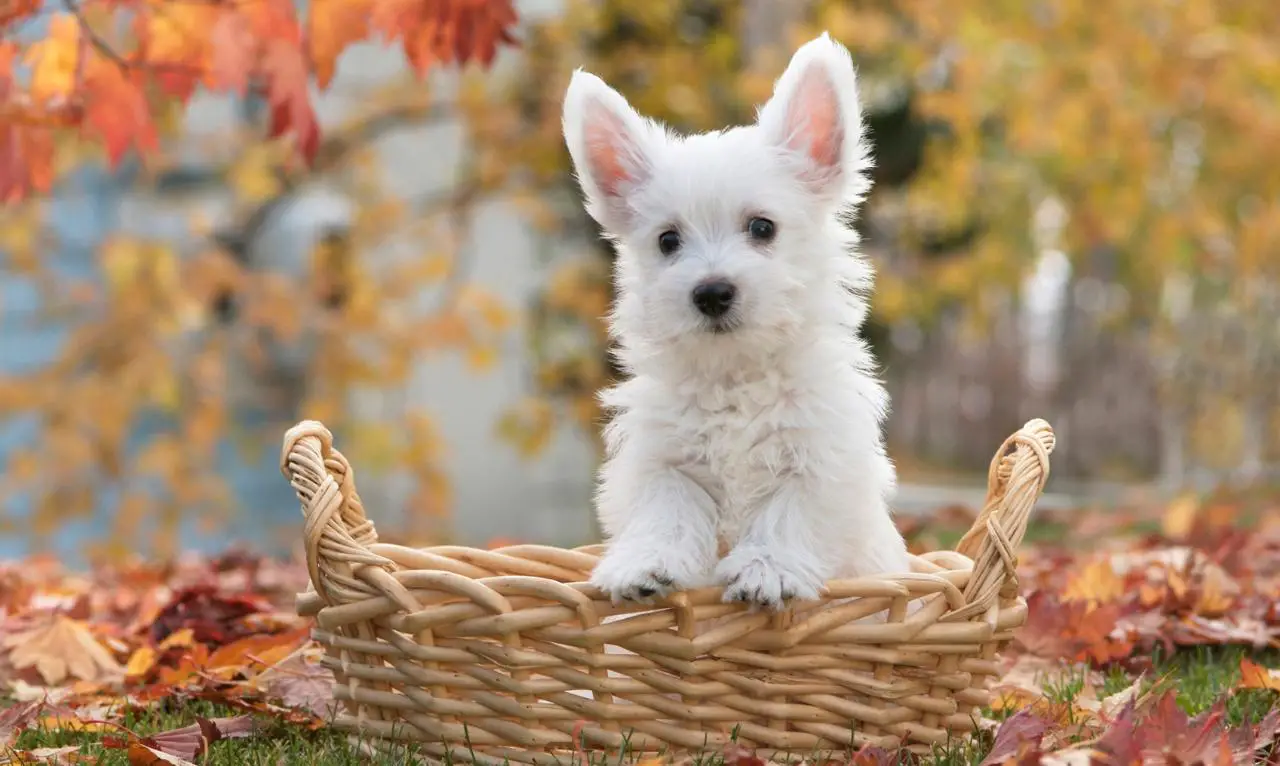
How to choose a puppy?
- Choose reliable, proven nurseries registered by the RKF. They usually have all planned mating.
- Give preference to breeders or kennels who are ready to provide advisory support to their clients throughout the puppy’s growing up. Unscrupulous “breeders”, whose main goal is to make a profit from the sale of animals, as a rule, do not make such concessions.
- If possible, take a look at a few litters. Offspring from different parents can differ significantly in both external and behavioral indicators.
- The gender of the West Highland White Terrier practically does not affect the type of his temperament and intellectual abilities, although it is believed that males of this breed learn faster than females
- Evaluate the level of hygiene and conditions of the puppies in the kennel. It is great if the kids do not sit in dirty cages, but move freely around the territory allotted to them.
- Feel the belly of the puppy you like. If additional swelling is felt in the navel or there is a protrusion of the peritoneum, it is likely that in the future the baby will be diagnosed with a hernia.
- Responsible breeders test West Highland White Terriers for genetic diseases, so before buying, do not be too lazy to familiarize yourself with the test results, so that later you will not be surprised where your baby has health problems.

